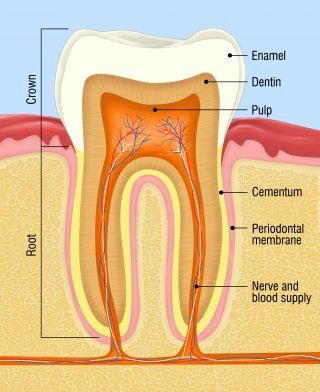Is Nano Hydroxyapatite a Safe, Effective, Fluoride Alternative?
If you listen to an oral care specialist for a hot minute, you’re likely to hear all about fluoride. Fluoride is the go-to preventative tool recommended by Amercian Dental Association. And with good reason! The introduction of fluoride has revolutionized oral health. However, it does have some downsides. Too much fluoride can lead to fluorosis, tooth discoloration. Also, fluoride can be dangerous if swallowed in large quantities, and is not recommended for children under 6 years old. Some scientists have expressed concerns at the effect of water fluoridation and hormone levels.
At West One Family Dental, we still think fluoride toothpaste is an effective tool for cavity prevention, when used correctly. However, there is a new (to the USA) superstar- Nano Hydroxyapatite- that’s getting lots of attention, and we’d be remiss to not cover it here.
What is Nano Hydroxyapatite?
Hydroxyapatite sounds complicated, when in fact it’s the substance that composes up to 60% of your bone structure, and 90% of your tooth enamel already! Nano simply means a much smaller version of something. So, Nano Hydroxyapatite, or n-HA, is what we call very small portions of this substance that our body uses to strengthen bones. In nature, Hydroxyapatite does not occur in the nano form. N-HA is created in a lab, which is how we get this tiny form.
I thought bones were made from calcium?
You may remember we’re often told to drink more calcium, since bones are made from calcium. In reality, calcium is a necessary ingredient our body uses to make Hydroxyapatite, so your elementary science teacher wasn’t wrong.
Where did it come from?
Nano Hydroxyapatite was first refined from naturally-occurring Hydroxyapatite in the 1970’s to help astronauts who experienced bone density and tooth enamel loss in space. Fluoride was already widely used in the United States, and few concerns were expressed at the time, so Nano Hydroxyapatite never became popular for oral healthcare here. However, a Japanese toothpaste company bought the patent from NASA and popularized it in Japan. Over the last 40 years, it has been widely used and studied in Japan and is now their gold standard in cavity prevention.
Is Nano Hydroxyapatite effective?
Nano Hydroxyapatite works by remineralizing teeth from the inside out. When you eat or drink acidic drinks, your enamel weakens with micro cracks and fissures as a result of the bacteria in your food and on your teeth already. if n-HA is available in your mouth, your tooth will absorb n-HA to rebuild this damage, filling the cracks and bridging the fissures. This can also reduce hypersensitivity to hot and cold sensations.
Head-to-Head: Fluoride and Nano Hydroxyapatite
Several studies have tested the effectiveness of n-HA in oral care products. Some suggest n-HA is better than fluoride, while more recent studies suggest they are equally effective.
Fluoride works to create a barrier on the outside of your teeth and may protect them from acids better. However there are the potential downsides from accidental ingestion. Nano Hydroxyapatite works by absorbing deeper into teeth, building up inside, and strengthening teeth from the inside out. However, some research suggests this method is not as effective against strong acidic substances. So, which one is better? The one you will use regularly.
Is it safe?
Unlike fluoride, ingesting n-HA is not harmful. It is naturally occurring (like fluoride) and bioavailable (unlike fluoride). While we never recommend swallowing your toothpaste, if it contains n-HA and not fluoride, it is actually safe to swallow. That’s why toothpastes with n-HA are safe and recommended for children under 6 years old.
As with most substances, some people are allergic to Nano Hydroxyapatite. Allergic reactions might present with symptoms such as dry mouth, headache or fatigue, frequent urination, flushing or sweating, and stomach discomfort. If you experience any of these symptoms after trying out n-HA, stop using it immediately and contact your doctor.
So if for some reason, you’ve soured on fluoride or have concerns, give Nano Hydroxyapatite a try! Our main concern is that you prioritize rebuilding your enamel, and we encourage our patients to use any effective, proven method to do that!
The post Is Nano Hydroxyapatite a Safe, Effective, Fluoride Alternative? appeared first on West One Family Dental.






